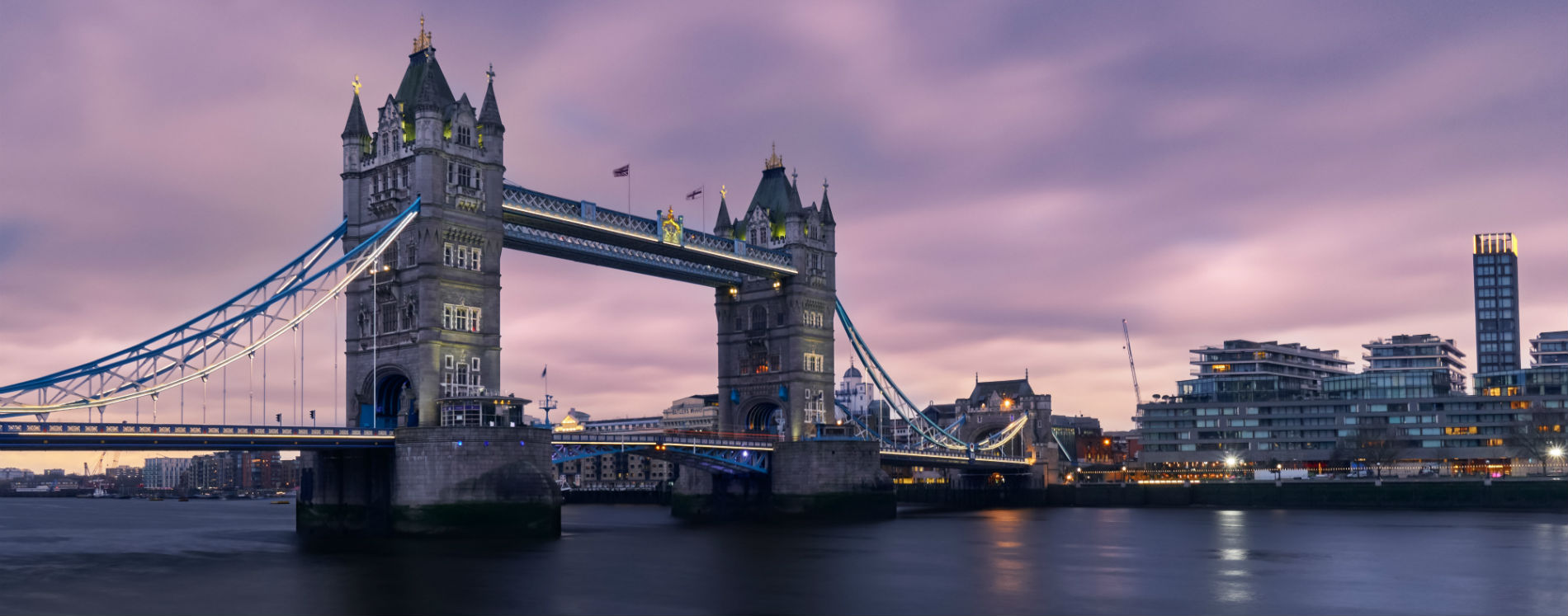London … And Oxford, The Cotswolds, Cambridge, York, Dover, Devon And/Or Cornwall
London is an incredible city. There is a never-ending bucket list of things to do — so much history, culture, diversity and character. The city is also surrounded by other captivating places, which are just a short drive or train ride away. We’ve built our London And … trips on this model. Take in London over the course of several days and then add one or more of the many fine other destinations to your trip – opt for day trips or extended travel to each location. Each of these destinations is truly special and will add to the richness of the travel experience. Want to speak with a trip planning expert — request a call here!
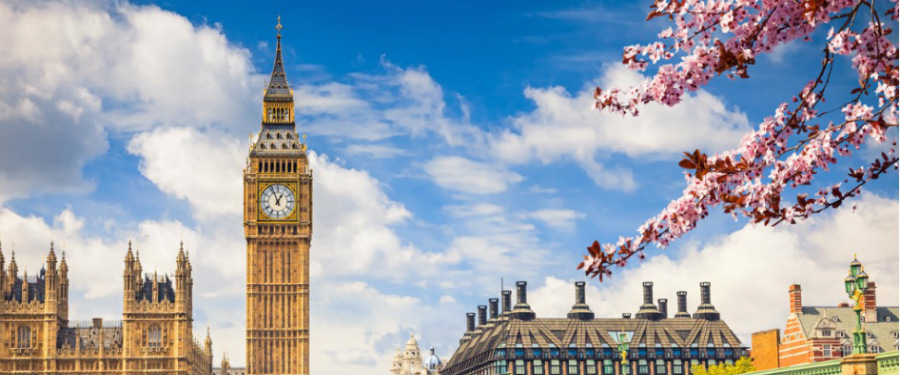
London
There are numerous must-sees while in London: Trafalgar Square (home to the incredible National Gallery – paintings from Botticelli to Van Gogh and well beyond), Buckingham Palace (including the Changing of the Guard pageantry each morning), the Royal Mews (working stables for the stunning collection of royal coaches, horses and carriages), 10 Downing Street (home of the Prime Minister), Big Ben, Westminster Abbey (the U.K.’s coronation church incredibly since 1066), the Houses of Parliament, London Eye, the Tower of London, Piccadilly Circus (akin to Times Square, it is the portal to London’s theatre district) and Leicester Square (central to both London’s theatre and cinema world). Anyone with an interest in history should visit the Churchill War Rooms. Truly illuminating.
Many of our guest’s favorite activities are more low key. Enjoy a stroll in St. James’s Park (the oldest royal park in London and surrounded by both St James Palace and Buckingham Palace) or Hyde Park (next to Kensington Palace and the beautiful Kensington Gardens). Pop into world famous Harrods for some shopping (it’s not quite like any other retailer). Leadenhall Market, dating back to the 14th century, is now an ornate, covered, cobbled floor market that is located in the historic center of London’s financial district.
One of the very favorite experiences is visiting the Portobello Road Market in posh Notting Hill (made famous by the Hugh Grant/Julia Roberts movie) on Saturday mornings. The long road is filled with common flea market merchants (more than 1,000) selling clothing, household essentials, antiques and second hand goods. Stalls with old leather rugby balls might be right next to stalls with vintage tea service sets. It is great fun and great people watching. No one ever quite knows what to expect.
Theatre is part of London’s fabric, having been in existence since the mid-16th century. London theatre can actually be a trip unto itself. There are 40 theatres in the London’s West End, about the same as there are on Broadway, featuring many of the same shows as Broadway, but all with a British interpretation and, usually, a good dose of British humor. There are few things that please our London travel specialists more than getting our travelers great seats for these shows.
And lastly, we can’t allow anyone to leave London without having the opportunity to relish two most British experiences: first is tea – perhaps at Claridge’s or the Ritz (whether your are a tea drinker or not, it is an experience everyone should enjoy at least once), and, second is taking a black taxi ride which is quite different from a cab ride in the U.S. (it takes a black taxi driver three years of training, on average, and requires passing a written exam and several oral exams to get a license – they are wonderful ambassadors for the city).
London is a physically large city, about twice the size of New York City’s five boroughs. To make traveling about the city seamless, we have learned not only to recognize the truly great hotels, but to be cognizant of where they are located when compared to your itinerary. It really makes a difference.

The Cotswolds
The Cotswolds is as close to ‘old world’ England as anyone could hope for. It remains the favorite place to visit for a number of our travel planners. Stretching from Stratford-upon-Avon in the north to Stonehenge and Bath in the south, the places in the Cotswolds are what English countryside dreams are made of — rolling hills dotted with grazing sheep, thatched roof cottages and sturdy old structures made entirely of honey-colored Cotswold stone. The towns and villages in the Cotswolds are pretty much English perfection. Visiting there is like going back in time.
Our drivers will make a quick stop to study the ancient monoliths of Stonehenge, where you can contemplate the significance of the mysterious stone circle before venturing forward to Bath, a unique, feel-good city combining vibrant contemporary culture with a rich history and heritage. We don’t want you to miss the famous Roman Baths. They open up the mind to the workings of a society from so very long ago. We explore the historic town, its natural hot springs, Georgian architecture and the impressive Bath Abbey.
On to the Cotswolds, home to some of the most unspoiled and historic towns and villages in England. There are so many great sites to visit in the Cotswolds that the hardest part of any trip is deciding which to see. Given the small size of the towns and their close proximity to each other, it’s definitely possible to visit multiple places in the same day. Although after arriving in a village, most want to linger beyond the earmarked time (our drivers have become quite good at being flexible).
Enjoy a tour of Chavenage House in Tetbury, an Elizabethan Manor House that has been used as a TV location for many productions and is, at present, Trenwith in the popular PBS Masterpiece Poldark series. Head to Bibury, one of the most beautiful and serene places in the Cotswolds. Spend a few hours here, with a walk to Arlington Row, a wonderfully quaint area of the village. Burford, Bourton-on-Water (the “Venice of the Cotswolds”), Chedworth, Naunton (a little off the beaten path, but a great place to sit and enjoy the people) and Broadway are some of the handsomest villages in the area. In addition to admiring the architecture, you can feel free to dive into a pub for a pint, tuck into fine Cotswold cuisine in a local eatery or take a walk through the town. In each stop, we will provide suggestions on what to see, good places to eat and where you can just sit and view the unreal surroundings.
There are many wonderful walking trails in the Cotswolds, but if there is time for one walk, make it the easy, mile-long stroll between the timeless twin villages of Upper and Lower Slaughter (don’t let the names fool you), the lovely path running beside the lazy River Eye, past rose festooned cottages and skirting an old flour mill.
Chipping Campden (‘chipping’ means marketplace) is one of our favorites. It is a small town in the northern Cotswolds that was a popular wool trading center back in medieval times. Its historic charm is accentuated by the old inns and restaurants on High Street built using Costwold stone. Take away the automobiles and it feels like being back in ancient times. While in Chipping Campden, you won’t want to miss Hidcote Manor Gardens, the intricately designed outdoor arts and crafts gardens amid rolling Cotswolds hills.
Stratford-upon-Avon is one of the most popular tourist destinations in the U.K. thanks to it being the birthplace of William Shakespeare. Technically not within the boundaries of the Cotswolds, Stratford-upon-Avon is often considered the gateway to them. An unusual mix of old English village and modern city, Stratford-upon-Avon is quite a bit larger than the towns visited in the Cotswolds. Anne Hathaway’s Cottage (she was Shakespeare’s wife) is a highlight, providing a great view of what life was like in Shakespeare’s time.
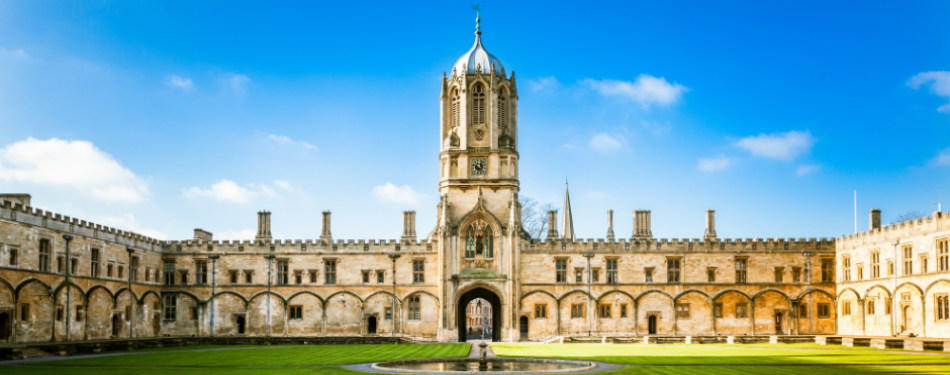
Oxford
Oxford, ‘The City of Dreaming Spires,’ is famous the world over for its University, founded in the 11th century and probably, along with Cambridge and Harvard, the most prestigious universities in the world. Oxford University has 28 prime ministers of the U.K., 69 Nobel Prize winners and 160 Olympic athletes amongst its notable alumni. Unlike its two counterparts, the university does not have a main campus, but rather its buildings are scattered through the city’s center. You can stroll through the town, soak up the atmosphere and visit the iconic Sheldonian Theatre (used for music concerts, lectures and university ceremonies), the Radcliffe Camera (part of the Bodleian Library complex), the Bodleian Library (the hub of a collection of 28 libraries serving the University of Oxford, collectively maintaining 13 million books), Keeble College (one of the largest of the University’s colleges), University Church of St. Mary the Virgin (a beautiful tower from the 13th century with great views of the heart of the city), Christ’s Church (one of the most well known of the colleges) and the historic Covered Market (opened in 1774) with its many covered (mostly food) stalls and more great people watching. It is wonderful fun just wandering through Oxford’s wide streets and intricate network of smaller lanes, lined with noble buildings and sights you will readily recognize as backdrops in familiar films and TV programs.
When traveling to or from Oxford, we love to stop along the way in Windsor. Windsor Castle is a residence of the British royal family with centuries of history within its walls. It is the oldest and largest still inhabited castle in the world. And then you can make a quick walk from the town to Eton College, the secondary school for the British elite and longtime home of the Wall Game, a quirky, home grown, rugby-like game played amongst the students every St. Andrews Day, but during which no goals have been scored since 1909. Archetypal British humor.
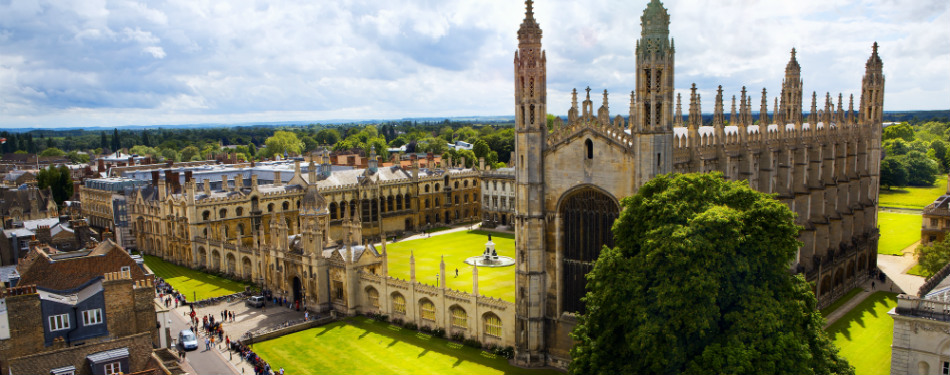
Cambridge
Cambridge University is the second oldest English-speaking university in the world (founded in 1231). It remains one of the most recognized academic institutions anywhere. Amongst the notable alumni are 14 prime ministers of the U.K, 117 Nobel Prize winners and alumni who have won 194 Olympic medals.
In contrast to Oxford University, Cambridge’s campus is built around a more centralized setting of the spectacular old buildings and green lawns of its 31 colleges, including the iconic Peterhouse College (1284), Pembroke College (1347), Corpus Christi College (1352), King’s College and the King’s College Chapel (1441), Queen’s College (1448), St. John’s College (1511) and Trinity College (1546). Punting (a long flat bottomed boat propelled by a long pole) along the college ‘backs’ is a relaxing way to see a number of the colleges. You will love this city.
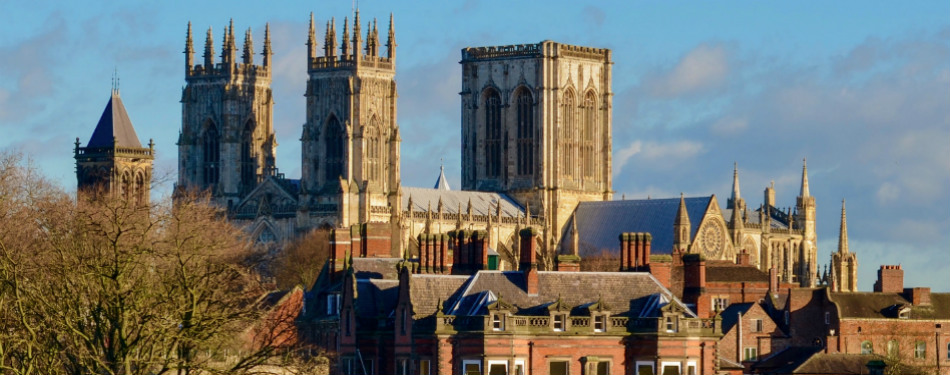
York
York is about a three hour drive from London, or an hour and forty-five minutes via the fast trains. But it is such a unique city that it is too hard to pass up this lovely corner of Northern England. The city is filled with so much that reveals the many layers of its long history. It’s home to massive York Minster, the largest medieval church in England, as well as many other storied churches. Nearly three miles of walkable walls remain from the original medieval walled city, offering marvelous views of the surroundings. Just outside of the city is majestic Castle Howard, set amid 1,000 acres of parkland and undoubtedly one of England’s most spectacular country estates.
Yet, York’s most memorable attraction is the Shambles, a narrow 14th-century thoroughfare with lovely overhanging timber-framed buildings whose second story windows are often only a few feet from their neighbors across the street. Once known for its numerous butcher shops (meat hooks can still be seen outside many shop fronts), the area is now a mix of little stores and restaurants. The Shambles is also where to find York’s fascinating Snickelways, a collection of small streets and winding footpaths connecting the old city. How could you not like a place where one of the city’s smallest streets is named Whip-Ma-Wop-Ma-Gate? We will set you up on a tour of the Shambles with a well-tested guide to provide the colorful history of this unique area.
If you desire to break up the drive or train ride to York, make a stop outside of Lincoln at the International Central Bomber Center. The recently opened center is part museum and part memorial, serving as a point for recognition, remembrance and reconciliation for those who served, supported or suffered during the bombing campaigns during the Second World War.
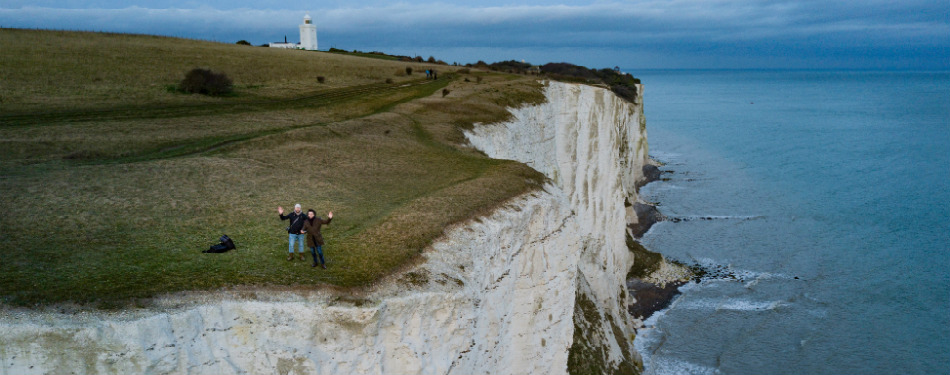
Dover
Dover is a town southeast of London and a major ferry port on the Strait of Dover, the narrowest part of the English Channel. Like other active port towns, Dover can be a little on the scruffy side. But the first sight of England, when crossing the Channel from France, is the world famous White Cliffs of Dover, England’s magnificent doorstep. This is what people come to Dover to see.
The cliffs are truly white chalk, the result of algae dying, sinking to the bottom of the ocean and combining with the remains of other decaying creatures. Over millions of years, that seabed rose above sea level – the result being the iconic white cliffs. The cliffs continue for eight miles, stretching on both sides of Dover, and reaching up 110 meters (350 feet) above the sea.
Perched on those cliffs is Dover Castle, the largest castle in the country. Dover, with its key geographical location as the nearest point to France, has always been a natural place to fortify against possible foreign invasion. In the early 11th century, after the Norman invasion, William the Conqueror built the first Dover Castle from earth and timber. From then on, the castle, including its chalk tunnels built during the Napoleonic Wars, was active in some fashion through post-World War II, a continuous nine-century span.
Just down the road is the Battle of Britain Memorial, a tribute to a relatively small group of fighter pilots and other aircrew who won a pivotal battle of World War II. In describing their outsized contribution to the war, Winston Churchill famously declared: ‘Never in the field of human conflict was so much owed by so many to so few.’
Dover is a highly educational day trip from London.
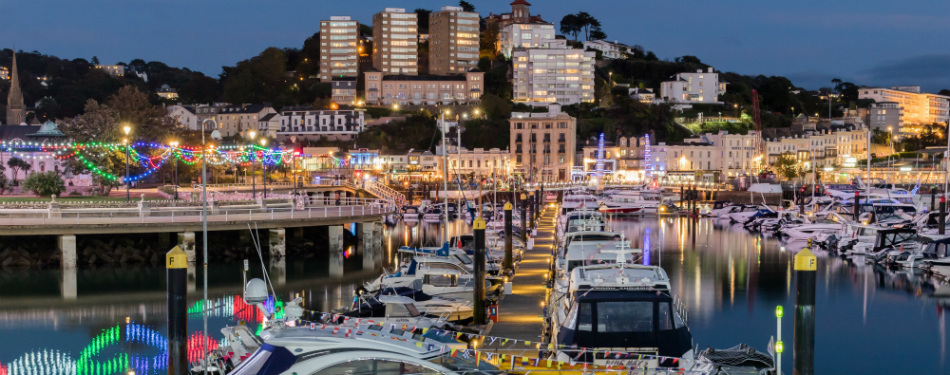
Devon
Devon is a county in the southwest of England containing a smorgasbord of cities and towns, all unique and intriguing in their own right. Devon has two separate coastlines: to the south, on the English Channel, and to the north, on the Celtic Sea and Bristol Channel. In the south are the cliffs of the Jurassic Coast, the gentle resorts and harbors of the so-called English Riviera and long estuaries with beautiful waterside towns. Inland are the wildernesses of two national parks, places of legend and folklore, and where wild ponies actually graze and run free. And then there’s a rugged north coast of rocky bluffs, beautiful sandy beaches and rolling surf. All are easily reachable from one another. As with the Cotswolds, it can be challenging to figure out which place to visit as there are so many great options, but don’t worry, we can help you choose!
In the south of Devon, Torquay and its nine gorgeous beaches are the anchor of the charming English Riviera, which also includes Paignton and Brixham further south. At the same time, it would be hard to find a prettier coastal town with more history than Dartmouth. On the western bank of the Dart Estuary, its harbor has been a seafaring hub for many centuries. Further inland on the River Dart is Totnes, a more offbeat town fostering artists and musicians, with an independent spirit which for some Brits is a real breath of fresh air when compared to the more formal, affluent areas surrounding it.
Just up the road from Totnes is Dartmoor National Park, the largest and least-inhabited open space in southern England, which is as mysterious as it is visually breathtaking. It is perhaps best known for the resilient ponies that have been living freely on the moors of Dartmoor for centuries. Just over an hour north, Exmoor is the second of Devon’s two national parks. It is a world of untamed sandstone moors, and a great place to get some exercise, accessible via miles and miles of footpaths and bridleways, crossing rivers and snaking along green valleys and summits. On the north coast of Devon, the beach at Woolacombe, often listed as one of the greatest in Europe, is vast, sandy, surrounded by greenery and with waves that attract surfers.
Completing a circle around Devon is a visit to the history laden Jurassic Coast, a UNESCO World Heritage Site. Throughout prehistoric times, this part of the world assumed many diverse landforms, including marsh, sea and even desert. Emerging from the cliff faces and rocks are the fossils of the many varied animals and plants that once thrived in these environments. For anyone who is a fossilist, Devon’s east coast is a dream come true.
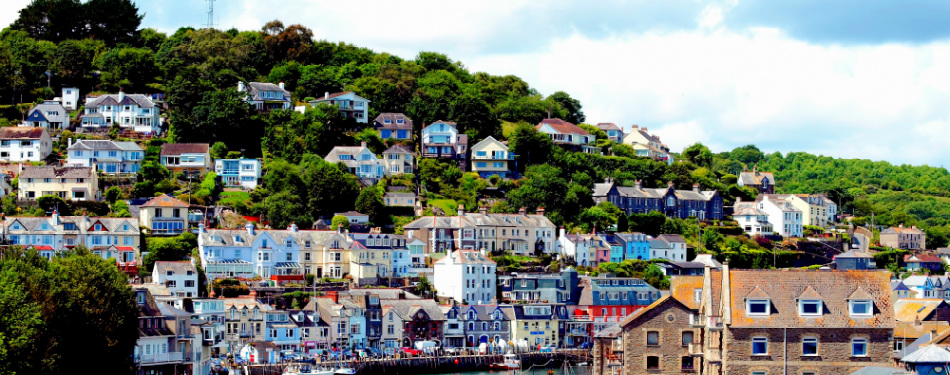
Cornwall
When considering England, beautiful beaches, pristine harbors and surfing rarely come to mind. But that is essentially what describes Cornwall. Cornwall is the county of Celtic heritage just to the southwest of Devon. It is a peninsula bordered to the north and west by the Celtic Sea and to the south by the English Channel. Sheltered by a rocky granite coastline and deep granite inlets on the coast are village ports that harken back to a different time for their fishing boats and stone cottages. Though roughly half the size in both land and population, it is often spoken of in the same breath as Devon.
Cornwall’s centuries old fishing heritage, while still alive and well, today plays a significantly lesser role with vacationing taking over as the primary industry owing to the peninsula’s beautiful beaches and scenic harbors. Even so, the towns have retained much of the quaint charm of bygone days. St. Ives is typically lauded as England’s prettiest seaside resort, and Newquay the surfing mecca due to a beach break that causes tall, hollow waves that will test the skills of seasoned surfers.
Still there are many less sensational but incredibly appealing small towns and villages in Cornwall: Penzance (England’s most westerly town), Falmouth (on the Fal River Estuary which widens into the third deepest harbor on the planet and where the American fleet was based during World War II), Mevagissey (a quaint former fishing village), Padstow (an active boating community known for some of the best seafood restaurants in Cornwall), Polperro (another pretty former fishing village tucked into a rocky inlet), Looe (yet another adorable fishing port), Boscastle (a small coastal village of old cottages and inns) and Bude (more surfing beaches beneath the highest sea cliffs in Cornwall).
We recognize that finding you the charming, truly British places to stay amongst these many destinations is an essential ingredient of any custom trip. Let us put together an unbelievable experience for you in England.
